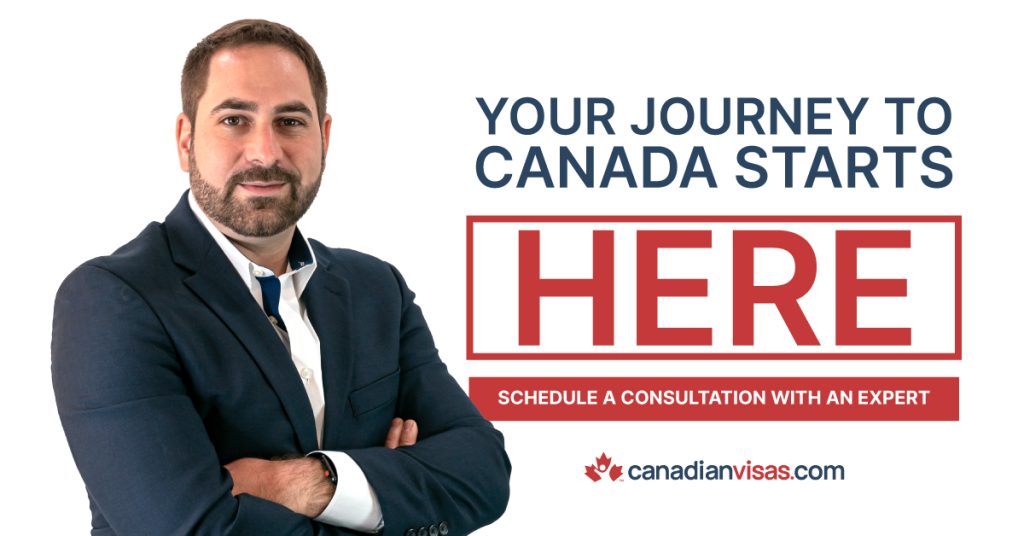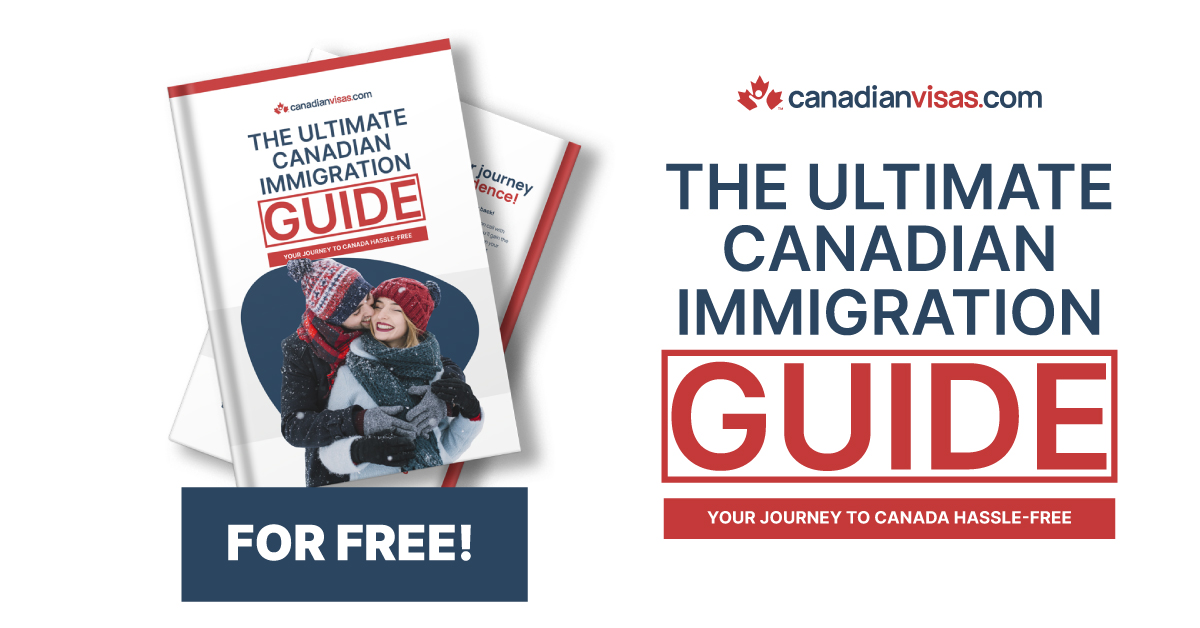
Apr 24, 2024 | Business Immigration, Canadian Experience Class, Citizenship, Complete Representation, Federal Skilled Trades, Humanitarian & Compassionate, Permanent Residency, Processing Times
The National Occupational Classification (NOC) is a standardized system used to classify and categorize occupations in Canada. This system is used for various purposes, including immigration, labor market research, and wage reporting. For immigrants to Canada, the NOC is an essential tool for understanding their eligibility for certain immigration programs and for finding work in their field.
What is the NOC?
The NOC is a five-tiered hierarchical structure that classifies occupations based on their skill level, education, training, and experience requirements. There are 10 broad occupational categories, 45 major groups, 89 minor groups, 162 minor groups, and 516 unit groups. Each unit group is assigned a unique four-digit NOC code.
How is the NOC used for immigration?
The NOC is used by Immigration, Refugees and Citizenship Canada (IRCC) to assess the eligibility of applicants for certain immigration programs, such as the Express Entry system. The NOC code of an applicant’s occupation is one of the factors that is used to calculate their Comprehensive Ranking System (CRS) score. A higher CRS score means that an applicant is more likely to be invited to apply for permanent residency.
How can I find my NOC code?
There are a few ways to find your NOC code. You can search for it by job title using the NOC website: https://www.canada.ca/en/immigration-refugees-citizenship/services/immigrate-canada/express-entry/eligibility/find-national-occupation-code.html, or you can browse the NOC structure by occupational category. You can also find your NOC code in job postings.
What are some tips for using the NOC for immigration?
- Make sure you are using the correct NOC code. The NOC was updated in 2021, so make sure you are using the most recent version of the code.
- Choose a NOC code that is closely related to your occupation. If you are not sure which NOC code to choose, you can contact an immigration consultant or job counselor.
- Be prepared to provide evidence of your work experience. When you apply for an immigration program, you will be asked to provide evidence of your work experience. This may include job letters, transcripts, and references.
The Most Common NOC Classifications for Immigrants to Canada
The following table shows the most common NOC classifications for immigrants to Canada in 2021:
Please note that this is just a small sample of the many NOC classifications that are relevant to immigrants to Canada. The best way to find the NOC code that is right for you is to search the NOC website or to contact an immigration consultant.

Additional tips for using the NOC for immigration
- Consider your skills and experience. When choosing a NOC code, it is important to consider your skills and experience. What are you good at? What experience do you have? Choose a NOC code that is a good match for your skills and experience.
- Research the job market. Once you have chosen a NOC code, it is important to research the job market for that occupation. Is there a demand for workers in that occupation? What are the average salaries for that occupation?
- Be prepared to adapt. The Canadian job market is different from the job market in many other countries. Be prepared to adapt your skills and experience to meet the needs of the Canadian workforce.
Conclusion
By understanding the NOC and how it is used for immigration, you can increase your chances of successfully immigrating to Canada and finding work in your field.

Mar 12, 2024 | Business Immigration, Canadian Experience Class, Citizenship, Complete Representation, Federal Skilled Trades, Humanitarian & Compassionate, Permanent Residency, Processing Times
Invitation to Apply for Permanent Residence Canada (ITA)
If you are interested in becoming a Permanent Resident of Canada, you will need to be invited through an Invitation to Apply (ITA). This ITA is a document issued by Immigration, Refugees and Citizenship Canada (IRCC). After receiving an ITA, applicants will have the chance to apply for Canadian permanent residence and bring their accompanying family members, such as their spouse or common-law partner and any dependent children, along with them.
Step-by-step process of getting an Invitation to Apply (ITA) to immigrate to Canada:
1. Create an Express Entry profile to enter the Express Entry pool.
The first step involves submitting information about your skills, language ability, education, and work experience. If you meet the criteria for immigration to Canada, you will be placed in the Express Entry pool.
2. Receive a Comprehensive Ranking System score.
You will then be given a Comprehensive Ranking System (CRS) score based on the information in your Express Entry profile. The CRS score is used to rank candidates based on their skills and other factors.
3. Boost Your CRS Score
The Comprehensive Ranking System (CRS) assigns points based on your human capital factors like skills, education, age, language proficiency, and work experience. A higher score increases your chances of receiving an ITA. Consider these strategies:
- Improve Language Skills: Aim for high scores on English or French language tests like IELTS or CELPIP. Strong language abilities are essential for integrating into Canadian society and the workforce.
- Gain Work Experience: Relevant Canadian or international experience boosts your score. Look for opportunities in fields listed in Canada’s National Occupational Classification (NOC) for additional points.
- Pursue Higher Education: A Canadian degree, diploma, or relevant post-secondary qualification can be advantageous. Consider Canadian institutions or programs approved by Canadian education credential assessment services.
- Secure a Valid Job Offer: A job offer from a Canadian employer with LMIA (Labour Market Impact Assessment) approval adds significant points and demonstrates your employability in Canada.
- Provincial Nomination: Receiving a nomination from a Canadian province/territory can significantly increase your CRS score. PNPs target skilled workers to address specific labor market needs. Research programs offered by provinces that align with your skills and experience.
4. Receive an Invitation to Apply (ITA) if your score is above the cut-off threshold score.
IRCC regularly conducts draws inviting candidates with the highest CRS scores to apply for permanent residence. The cut-off score for each draw varies depending on the number of applications received by IRCC.
If your CRS score is higher than the cut-off threshold score for that specific Express Entry draw, you will receive an ITA.
5. Submit a complete application for permanent residence (APR) in your online account.
Once you receive an ITA, you will have 60 days to submit a complete application for permanent residence (APR) in your online account. This involves providing documents such as passport, language test scores, job offer letter, and more.
Read more about: GCKey: Apply Online For Canada Immigration and Visa
6. Receive a Confirmation of Permanent Residence (COPR) and/or a Permanent Residence Visa.
After your application is approved, you will receive a Confirmation of Permanent Residence (COPR) and/or a Permanent Residence Visa.
7. Live and work in Canada as a Permanent Resident.
Finally, once you have your permanent residence visa, you can travel to Canada and live and work as a Permanent Resident.

National Occupational Classification (NOC) and Express Entry
The NOC is a system used by the Canadian government to categorize jobs based on skill level, type of work performed, and educational requirements. When creating your Express Entry profile, you’ll need to identify the NOC code that best reflects your primary work experience. Occupations in higher NOC skill levels (typically NOC 0, A or B under NOC 2016 or TEER levels 3, 4 or 5 under NOC 2021) are generally eligible for Express Entry.
Here’s how the NOC can influence your Express Entry profile:
- Eligibility: Choosing the correct NOC code ensures your work experience aligns with eligible occupations for Express Entry.
- CRS Points: Certain NOC codes may award more points under the CRS compared to others. Jobs requiring higher skill levels or those in high demand by Canadian employers tend to receive more points.
Research the NOC carefully and choose the code that most accurately reflects your main work duties. A mismatch can affect your eligibility or CRS score. You can find the NOC list and descriptions on the Employment and Social Development Canada website: Find your National Occupation Classification (NOC).
What Should You Do After You Receive an ITA
If you have received an Invitation to Apply (ITA), you have only 60 days to put together and submit all of your required supporting documents. To ensure that you’re ready to apply and make the most of the two-month period, it is important to begin collecting and organizing the necessary documents ahead of time.
In case you are unable to submit your application within the 60-day period, you will have the option to re-enter the Express Entry pool and start the process over.
How to Get an Invitation to Apply for Permanent Residence
To receive an ITA, you must first be eligible to immigrate by meeting the minimum requirements for the Express Entry pool. The Comprehensive Ranking System (CRS) score is used to assess a candidate’s eligibility.
The CRS score ranks an individual based on:
- Skills
- Education
- Language ability
- Work experience,
- and other factors.
Invitations to apply (ITA) will be given to those with a minimum CRS score or higher of that specific Express Entry draw.
Read more about: Changes in Express Entry in 2023
Documents you will need to apply for Permanent Residency
You will need the following documents to apply for a Canadian Permanent Residence:
- Passport
- Language Test score results
- Birth Certificate
- Work experience documentation
- Police Verification report
- Upfront medical receipt
- Medical report
PNP programs may require additional documents, including:
- Education Credential Assessment (ECA)
- Proof of Funds
- Offer letter from a Canadian employer
- Provincial Nomination Certificate or territorial certificate of nomination
- Marriage certificates or divorce certificates (if applicable)
- Your Personal reference code
- Express Entry Profile Number
- Job seeker validation code
- Letter of recommendation from previous employers.
Not Getting an ITA?
If you don’t receive an ITA in this round, don’t be discouraged. Consider these options:
- Re-entering the Express Entry pool: Keep your profile updated and look for ways to improve your CRS score. Aim to gain more work experience, improve your language proficiency, or pursue further education.
- Exploring Provincial Nominee Programs (PNPs): Research targeted provincial nominations that align with your skills and experience. These programs can boost your CRS score and provide a direct path to permanent residence in a specific Canadian province.
We Can Help You Determine Your Eligibility! Talk to an adviser today! (Click here)
(more…)

Mar 12, 2024 | Blog, Canadian Employers, Federal Skilled Trades, Immigration, In the News, New Immigration Programs, New Laws, Skilled Workers, Working In Canada
But before packing your bags, understanding the cost of living in Canada is crucial for a smooth transition. This comprehensive guide explores the various expenses you’ll encounter, regional variations, and expert tips to adjust your budget and thrive in your new Canadian home.
Cost of Living in Canada
Breaking Down Your Budget
-
Accommodation: The biggest chunk of your expenses will likely be housing.
- Rent: Cities like Toronto and Vancouver have high rent, averaging $1,800-$2,000 CAD for a one-bedroom apartment. Smaller cities and rural areas offer more affordable options, sometimes under $1,000 CAD. Consider shared accommodations or basement apartments to save.
- Homeownership: Aspiring homeowners should be aware of varying prices across regions. Major cities have higher housing costs, while rural areas offer more economical options. Factor in mortgage payments, property taxes, and home insurance.
- Utilities: Basic utilities like electricity, water, and internet typically range from $100 to $200 CAD per month. Heating costs can be significant in colder regions during winter.
-
Food: Grocery shopping in Canada is comparable to other developed nations. Expect to pay around $500 CAD per month for essentials.
- Groceries: Major supermarket chains offer a good variety of fresh, local, and imported products. Consider joining loyalty programs for additional savings.
- Dining Out: Eating out can be expensive, especially in cities. Budget-friendly restaurants offer meals under $20 CAD, while upscale restaurants can cost significantly more. Explore ethnic cuisine for delicious and affordable options.
-
Transportation:
- Public Transportation: Major cities boast efficient public transit systems with fares ranging from $2-$4 CAD per trip. Monthly passes offer cost savings for frequent riders.
- Private Transportation: Owning a vehicle comes with purchase costs, fuel (around $1.50 CAD per liter), insurance (which varies depending on factors like age and driving history), and maintenance expenses. Consider carpooling or opting for fuel-efficient vehicles.
-
Other Expenses:
- Phone & Internet: Phone and internet plans vary in price and features. Compare providers to find the best deals. Expect to pay around $50-$100 CAD per month for a basic phone and internet bundle.
- Clothing: Clothing costs depend on your style and shopping habits. Canadian winters require warm clothing, so factor that into your budget. Consider buying second-hand clothes or shopping during sales.
- Entertainment: Canada offers a variety of entertainment options. Enjoy free activities like hiking, exploring parks, and attending cultural events. Budget for occasional paid entertainment like movies, concerts, or sporting events.
Understanding Regional Variations
The cost of living varies significantly across Canada. Major cities like Toronto, Vancouver, and Calgary tend to be more expensive than smaller cities and rural areas. Housing costs are the primary driver of these variations.
The cost of living can differ significantly across Canada. Here’s a general breakdown:
- Major Cities (Toronto, Vancouver, Calgary): Expect higher costs for rent, dining out, and entertainment.
- Mid-Sized Cities (Ottawa, Edmonton, Winnipeg): Offer a good balance between affordability and amenities.
- Smaller Cities & Rural Areas: Generally have lower costs for housing and daily expenses.
Taxes and Additional Considerations
- Taxes: Canada has a progressive tax system, meaning higher earners pay a higher percentage of income tax. Factor in federal and provincial taxes when calculating your net income.
- Healthcare: Canada offers universal healthcare, but some services like prescription drugs may require additional private insurance.
- Cell Phone Plans: Canadian phone plans can be expensive compared to other countries. Research prepaid or pay-as-you-go options for a more cost-effective approach.

Budgeting Tips for a Smooth Transition
- Create a Realistic Budget: Track your income and expenses to understand your spending habits. Allocate funds for essential categories like housing, food, and transportation.
- Research Your City: Before moving, research the average cost of living in your chosen city. This allows for informed budgeting and avoids surprises.
- Embrace a “Cook at Home” Mentality: Dining out regularly can quickly drain your budget. Preparing meals at home offers significant cost savings and allows you to control your diet.
- Utilize Free Activities: Explore Canada’s abundant free entertainment options like parks, museums (often with free admission days), and outdoor activities.
- Seek Out Deals and Discounts: Look for loyalty programs, student discounts, and promotions for everyday purchases. Consider buying used items where appropriate.
Conclusion
Canada offers a high quality of life with a welcoming atmosphere for newcomers. By understanding the cost of living, planning your budget, and utilizing cost-saving strategies, you can comfortably adjust to your new life in Canada. Embrace the diverse experiences this beautiful country has to offer and enjoy your Canadian adventure!


Mar 8, 2024 | Blog, Canadian Employers, Federal Skilled Trades, Immigration, In the News, New Immigration Programs, New Laws, Skilled Workers, Working In Canada
Canada, with its booming economy, diverse landscape, and welcoming atmosphere, attracts skilled individuals worldwide seeking exciting work opportunities. If you’re one such individual dreaming of working in Canada, this in-depth guide will equip you with the knowledge needed to navigate the work permit process. We’ll delve into the different types of work permits, eligibility requirements, application procedures, and valuable resources to help you secure your Canadian work permit.
How to Obtain a Work Permit in Canada
Employer-Specific vs. Open Work Permits
There are two main categories of work permits in Canada, each catering to specific scenarios:
- Employer-Specific Work Permits: As the name suggests, these permits are tied to a specific job offer from a pre-approved Canadian employer. This is the most common type of work permit and requires your employer to demonstrate they couldn’t find a qualified Canadian citizen or permanent resident for the position (through a process called a Labour Market Impact Assessment or LMIA).
- Open Work Permits: These permits offer greater flexibility, allowing you to work for any employer in Canada. Open work permits are typically issued to spouses or partners of permanent residents or study permit holders, recent graduates under specific programs, and individuals participating in international exchange programs.
Understanding Eligibility
To be eligible for a work permit in Canada, you’ll generally need to meet the following criteria:
- Valid Job Offer (Employer-Specific Permits): For employer-specific permits, a valid job offer from a Canadian employer with an LMIA for the position is crucial.
- Meet Educational Requirements: You may need to possess a minimum educational qualification relevant to the offered position.
- Work Experience: Relevant work experience in the field you’re applying for can significantly enhance your application.
- Language Proficiency: Demonstrate English or French language proficiency by meeting the minimum Canadian Language Benchmarks (CLB) scores.
- Proof of Funds: Show sufficient financial resources to support yourself during your stay in Canada.
- Medical Examination: You may be required to undergo a medical examination to ensure you meet Canada’s health standards.
The Application Process: A Step-by-Step Guide
Obtaining a work permit involves a multi-step process. Here’s a breakdown of the general steps:
- Secure a Job Offer (Employer-Specific Permits): Actively search for job opportunities in your field and connect with Canadian employers.
- Labour Market Impact Assessment (LMIA): Your employer will apply for and obtain an LMIA from Employment and Social Development Canada (ESDC) demonstrating the need for a foreign worker.
- Online Application: Once you have a job offer and LMIA (if applicable), proceed to submit the online application form for a work permit through Immigration, Refugees and Citizenship Canada (IRCC).
- Gather Supporting Documents: Compile all required documents, including your passport, educational certificates, work experience letters, LMIA (if applicable), language test results, proof of funds, and a medical certificate (if requested).
- Application Fees: Pay the applicable processing fees associated with your work permit application.
- Medical Examination: Attend a medical examination if required by IRCC.
- Processing Time and Decision: Be patient as processing times can vary depending on the complexity of your application and current workloads at IRCC. Await the final decision on your application.

https://bit.ly/TheUltimateCanadianImmigrationGuide
Popular Work Permit Programs
Several work permit programs cater to specific needs and skill sets:
- Federal Skilled Worker Program (FSWP): Ideal for skilled workers with strong educational backgrounds and work experience in high-demand occupations.
- Federal Skilled Trades Program (FSTP): Targets skilled workers in designated trades facing labor shortages in Canada.
- Canadian Experience Class (CEC): Provides a pathway for skilled workers who have gained valuable work experience in Canada through temporary work permits or international student programs.
- Provincial Nominee Programs (PNPs): These programs allow provinces and territories to nominate individuals aligned with their specific labor market needs. Receiving a provincial nomination significantly boosts your chances of securing a work permit.
Enhancing Your Chances of Success
Here are some valuable tips to increase your chances of obtaining a Canadian work permit:
- Target In-Demand Skills: Research occupations experiencing labor shortages in Canada and tailor your job search accordingly.
- Highlight Your Qualifications: Clearly showcase your skills, experience, and education in your resume and cover letter, emphasizing their relevance to the Canadian job market.
- Seek Professional Guidance: Consider consulting with immigration consultants or lawyers specializing in Canadian work permits for personalized guidance and application support.
- Language Proficiency Enhancement: Improving your English or French language skills can significantly enhance your application and open up more work.
Settling into Life in Canada
Obtaining a work permit is just the first step in your Canadian journey. Here are some additional resources to help you settle smoothly:
- Pre-Arrival Planning: Explore resources offered by IRCC and provincial governments on pre-arrival planning, including housing options, healthcare systems, and banking procedures.
- Settlement Services: Many Canadian cities and communities offer settlement services for newcomers. These services can assist with finding housing, registering for healthcare, opening a bank account, and learning about Canadian culture and customs.
- Job Search Assistance: Utilize employment agencies and job boards specializing in connecting skilled immigrants with employers.
- Networking: Building professional networks through industry events, online communities, and professional associations can open doors to new opportunities and career advancement.
Processing Times
Processing times for work permits can vary depending on several factors, including the type of work permit, your application’s complexity, and current IRCC workloads. Generally, employer-specific work permits tend to have faster processing times compared to open work permits. You can check IRCC’s website for estimated processing times for different types of work permits.
Cost Considerations
Work permit processing times can vary depending on the complexity of your application, current IRCC workloads, and your chosen program. It’s crucial to factor in processing times when planning your move to Canada. Additionally, expect to incur application fees, medical examination costs, and potentially, immigration consultant fees. Obtaining a work permit involves associated costs, including application fees, medical examination fees, and potentially, immigration consultant fees. Be sure to factor in these expenses when planning your work permit application journey.
Post-Work Permit Options
Obtaining a work permit can be a stepping stone towards permanent residency in Canada. Several immigration programs, like Express Entry, prioritize candidates with valid Canadian work experience. Explore your options and understand the pathways available to transition from a work permit holder to a permanent resident.
Alternative Options
While employer-sponsored work permits are the most common route, alternative options exist for individuals with unique circumstances:
- Self-Employed Work Permits: For individuals with exceptional skills and a business concept aligned with Canada’s economic needs, self-employment work permits may be an option. These require a detailed business plan demonstrating economic viability and job creation potential.
- Intra-Company Transfer (ICT) Permits: If you are currently employed by a multinational company with a branch in Canada, you may be eligible for an ICT permit to facilitate your transfer to the Canadian office.
Pre-Departure Considerations
Once your work permit is approved, congratulations! However, the journey doesn’t end there. Here are some essential pre-departure steps:
- Research Cost of Living and Housing: Canada boasts a high standard of living, so research the cost of living in your chosen city and explore housing options to ensure financial preparedness.
- Prepare for Canadian Winter (if applicable): If moving to a region with cold winters, invest in appropriate clothing and winterization gear.
- Open a Canadian Bank Account: Opening a bank account in Canada can simplify financial transactions upon arrival.
- Explore Settlement Resources: Many government and community resources are available to assist newcomers in settling into Canadian life. Familiarize yourself with these resources for a smoother transition.
Conclusion
Obtaining a work permit in Canada requires careful planning, meeting eligibility criteria, and navigating the application process. However, with the right preparation and resources, you can successfully secure your Canadian work permit and embark on an exciting new chapter in your career journey. Remember, Canada welcomes skilled individuals with a desire to contribute to its vibrant economy and diverse society. Take the first step today and unlock the possibilities of working and living in Canada!


Mar 7, 2024 | Blog, Canadian Employers, Federal Skilled Trades, Immigration, In the News, New Immigration Programs, New Laws, Skilled Workers, Working In Canada
Canada, consistently ranked as one of the best countries in the world to live in, attracts immigrants seeking a high quality of life, economic opportunities, and a safe and inclusive environment. With a population of over 38 million people, Canada’s vast and diverse landscape offers a variety of opportunities for newcomers.
This guide provides an overview of the different immigration options available to those interested in making Canada their home. It covers the most popular pathways, including Express Entry, Provincial Nominee Programs (PNPs), Family Sponsorship, Business Immigration, and Refugee and Humanitarian Programs.
Types of Immigration Options
1. Express Entry:
Express Entry is a points-based system that manages applications for permanent residence from skilled workers under three programs:
- Federal Skilled Worker Program (FSWP): Targets skilled workers with work experience in eligible occupations and meet specific language, education, and adaptability requirements.
- Federal Skilled Trades Program (FSTP): Focuses on skilled tradespeople in specific occupations facing labor shortages in Canada.
- Canadian Experience Class (CEC): Offers a pathway to permanent residence for skilled workers who have gained work experience in Canada.
To be eligible for Express Entry, candidates must create a profile and submit their information, including work experience, education, language proficiency, and other factors. The system then ranks candidates based on their Comprehensive Ranking System (CRS) score, and those with the highest scores receive invitations to apply for permanent residence.
2. Provincial Nominee Programs (PNPs):
PNPs are designed to address the specific economic needs of individual provinces and territories. Each PNP has its own eligibility requirements and application process. Some PNPs align with Express Entry, allowing candidates to be nominated by a province and receive additional points towards their CRS score.
Popular PNPs include:
3. Family Sponsorship:
Canadian citizens and permanent residents can sponsor their close family members, including spouses, common-law partners, dependent children, parents, and grandparents, to immigrate to Canada. The sponsorship process involves meeting specific eligibility requirements, demonstrating financial support for the sponsored family members, and submitting a complete application.
4. Business Immigration:
Canada welcomes entrepreneurs and business investors who can contribute to the country’s economic growth and create jobs. Various programs exist for business immigration, including:
- Start-Up Visa Program: Supports entrepreneurs who have innovative business ideas and the potential to create jobs in Canada.
- Self-Employed Persons Program: Targets individuals with skills and experience in eligible occupations who can establish their own business in Canada.
- Provincial Nominee Programs (PNPs): Many PNPs have streams for business immigration, such as the BC PNP’s Entrepreneur Immigration Category.
5. Refugee and Humanitarian Programs:
Canada offers a number of programs for refugees and other vulnerable people who need to resettle in Canada. These programs include:
- Refugee Resettlement Program: Provides assistance to refugees who have been recognized by the United Nations as being in need of resettlement.
- Humanitarian and Compassionate Considerations: Allows individuals to apply for permanent residence on humanitarian grounds, such as when they have family members in Canada or have faced persecution in their home country.
How to Choose the Right Option
The best way to choose the right immigration option for you is to carefully consider your individual circumstances. You should think about your skills, experience, education, language abilities, and financial resources. You should also consider your goals and aspirations for life in Canada.

Where to Find More Information
The Government of Canada’s website provides a wealth of information on immigration options. You can also find information from other sources, such as immigration consultants, and settlement agencies.
Conclusion
Canada is a great place to live, work, and raise a family. With so many different immigration options available, there is a pathway to Canada for almost everyone. By carefully researching your options and planning ahead, you can make your dream of immigrating to Canada a reality.

Mar 7, 2024 | Blog, Canadian Employers, Federal Skilled Trades, Immigration, In the News, New Immigration Programs, New Laws, Skilled Workers, Working In Canada
Launched in 2015, Express Entry has become the primary pathway for skilled workers to obtain Canadian permanent residency. This innovative system streamlines the immigration process, ranking candidates based on their human capital factors and inviting those with the highest scores to apply for permanent residency.
How Express Entry Works
1. Eligibility
To be eligible for Express Entry, you must meet the minimum requirements under one of the three federal programs:
-
Federal Skilled Worker Program (FSWP):
- Requires at least one year of continuous, full-time (or equivalent part-time) paid work experience in the past 10 years in an occupation classified under National Occupational Classification (NOC) Skill Level 0, A, or B.
- Possess a valid Educational Credential Assessment (ECA) from a designated organization proving your foreign education is equivalent to a Canadian educational credential.
- Demonstrate proficiency in English or French by meeting the minimum Canadian Language Benchmark (CLB) score of 7 in all four abilities (reading, writing, listening, and speaking) through an IRCC-approved language test.
- Meet the minimum points requirement in the Comprehensive Ranking System (CRS).
-
Federal Skilled Trades Program (FSTP):
- Targets skilled workers in specific trades facing labor shortages in Canada, as listed on the In-Demand Skills List.
- Requires a minimum of two years of continuous, full-time (or equivalent part-time) paid work experience in the past 10 years in a qualifying skilled trade.
- Must possess a valid Certificate of Qualification from a provincial or territorial regulatory body in Canada for your specific trade.
- Demonstrate proficiency in English or French by meeting the Canadian Language Benchmark (CLB) score of 7 in all four abilities.
- Meet the minimum points requirement in the CRS.
-
Canadian Experience Class (CEC):
- Offers a pathway for skilled workers who have gained at least one year of continuous, full-time (or equivalent part-time) skilled work experience in Canada within the past 3 years.
- Must have held a valid Canadian work permit for the skilled work experience.
- Demonstrate proficiency in English or French by meeting the minimum Canadian Language Benchmark (CLB) score of 7 in all four abilities.
- Meet the minimum points requirement in the CRS.
2. Building Your Express Entry Profile
Once you’ve confirmed your eligibility, it’s time to create your Express Entry profile. This online profile is where you showcase your skills and experience to IRCC. Be sure to meticulously fill out all sections, including:
- Work Experience: Detail your work history, including job titles, duties, employers, and employment dates.
- Education: Provide details of your educational qualifications, including diplomas, degrees, and institutions attended.
- Language Skills: Submit results from approved language tests to demonstrate your English or French proficiency.
- Adaptability: Include information about your spouse/common-law partner’s education and work experience, as well as any previous Canadian study or work experience you may have.
3. The Comprehensive Ranking System (CRS)
The CRS is the heart of Express Entry. It assigns points based on various factors that contribute to your potential success as a Canadian permanent resident. These include:
- Age: Younger applicants receive higher points.
- Education: Points are awarded based on your educational qualifications and their Canadian equivalency.
- Work Experience: Points are granted for skilled work experience relevant to your NOC code and Canadian labor market needs.
- Language Proficiency: Your proficiency in English or French significantly impacts your CRS score.
- Skill Transferability: Points are awarded for factors that demonstrate your ability to adapt and succeed in the Canadian workplace, such as your spouse/common-law partner’s skills and qualifications.
4. Enter the Express Entry pool
Your profile will be placed in the pool where it will be compared against other candidates.
5. Receive an Invitation to Apply (ITA)
Periodically, Immigration, Refugees and Citizenship Canada (IRCC) invites candidates with the highest CRS scores to apply for permanent residency.
6. Applying for Permanent Residency
If you receive an ITA, congratulations! You’ll have 60 days to submit a complete permanent residence application, including supporting documents such as:
- Medical examinations
- Police certificates
- Proof of work experience and education
- Proof of funds

https://bit.ly/TheUltimateCanadianImmigrationGuide
Factors Affecting Your CRS Score
- Age
- Education
- Work experience
- Language proficiency (English or French)
- Adaptability (spouse/common-law partner factors, Canadian work experience, etc.)
Maximizing Your CRS Score
A high CRS score is crucial for receiving an Invitation to Apply (ITA) from IRCC. Here are some strategies to enhance your CRS score:
- Improve Language Skills: Aim for higher scores in English or French language tests.
- Gain Additional Canadian Work Experience: Work experience in Canada carries significant weight in the CRS point system.
- Pursue Higher Education in Canada: Obtaining a Canadian educational credential can boost your score.
- Explore Provincial Nomination Programs (PNPs): Many PNP programs align with Express Entry, offering additional CRS points if you receive a nomination from a specific province.
- Consider a Spouse or Common-Law Partner: Their education, work experience, and Canadian ties can positively affect your CRS score.
Benefits of Express Entry
Express Entry offers several advantages compared to traditional immigration streams:
- Faster Processing Times: Applications are typically processed much quicker through Express Entry.
- Transparent System: The point-based system ensures a clear and meritocratic selection process.
- Flexibility: Successful applicants can choose where to live and work in Canada (with some exceptions).
Conclusion
Express Entry is a powerful tool for skilled workers seeking to build a life in Canada. By understanding the eligibility requirements, optimizing your CRS score, and exploring additional options, you can significantly increase your chances of receiving an invitation to apply for permanent residency. Start your journey today and unlock the possibilities that Canada has to offer!









 Useful Resources for Canada
Useful Resources for Canada
 Useful Resources for U.S.
Useful Resources for U.S.
 Our Local Immigration Services
Our Local Immigration Services